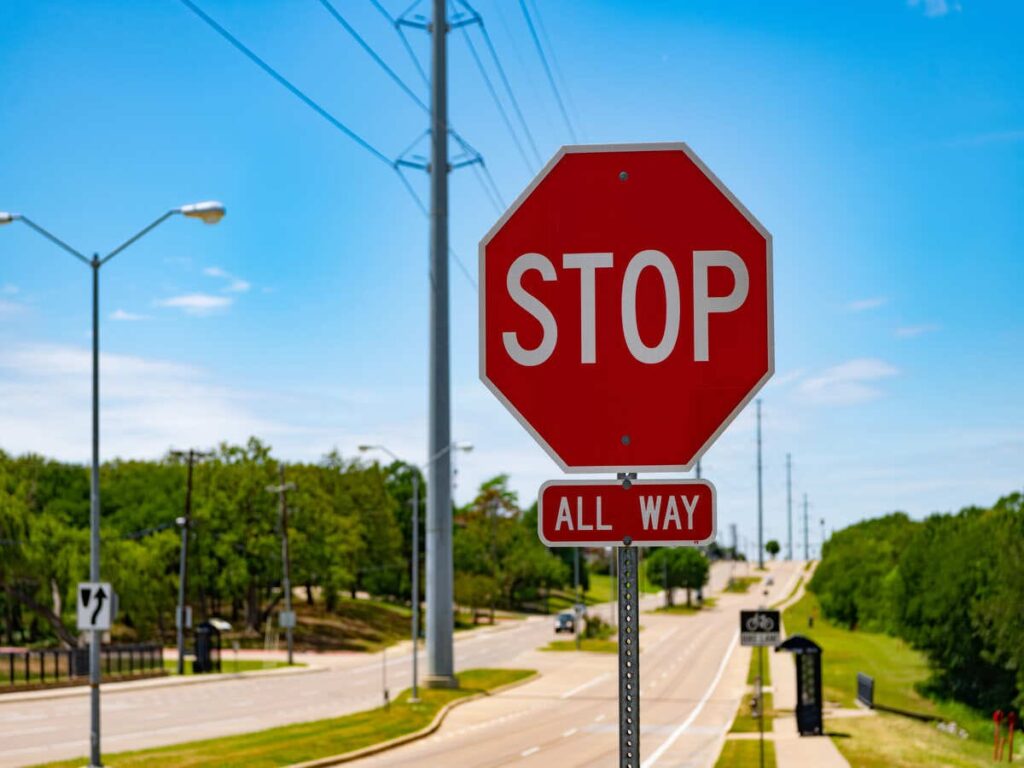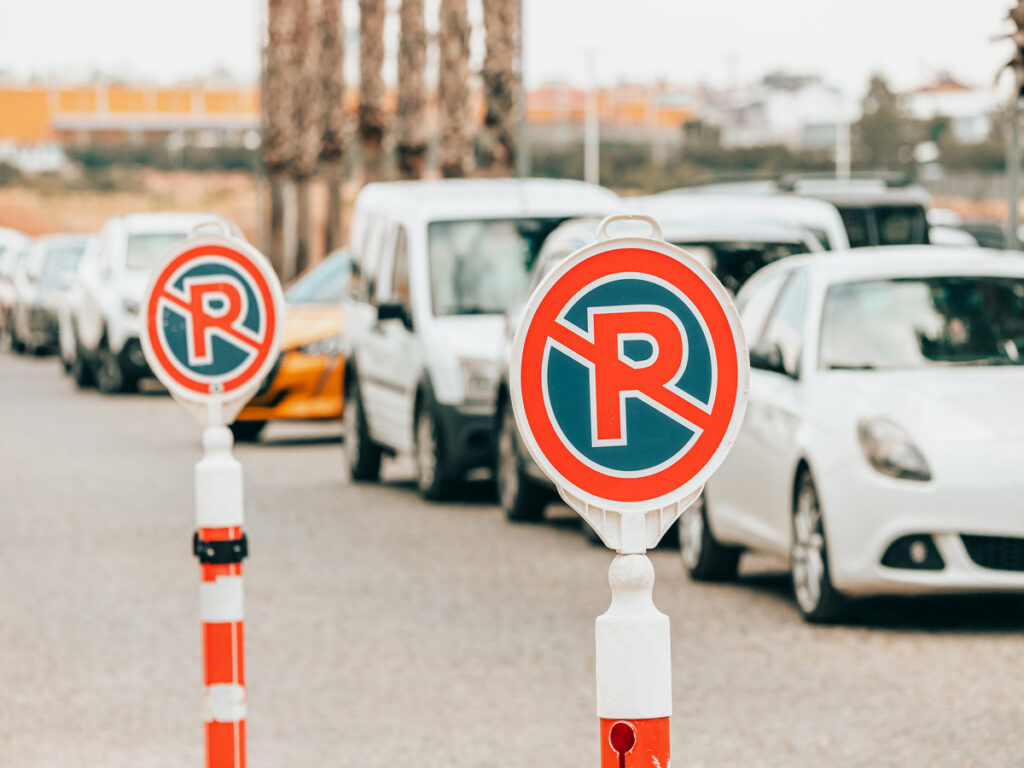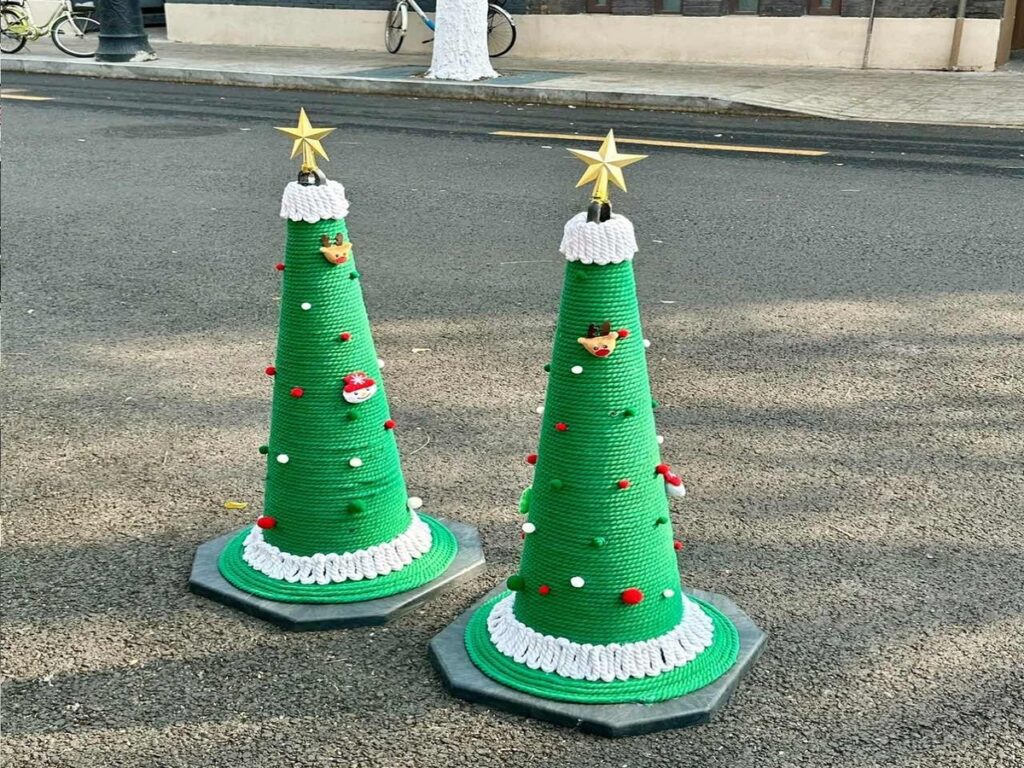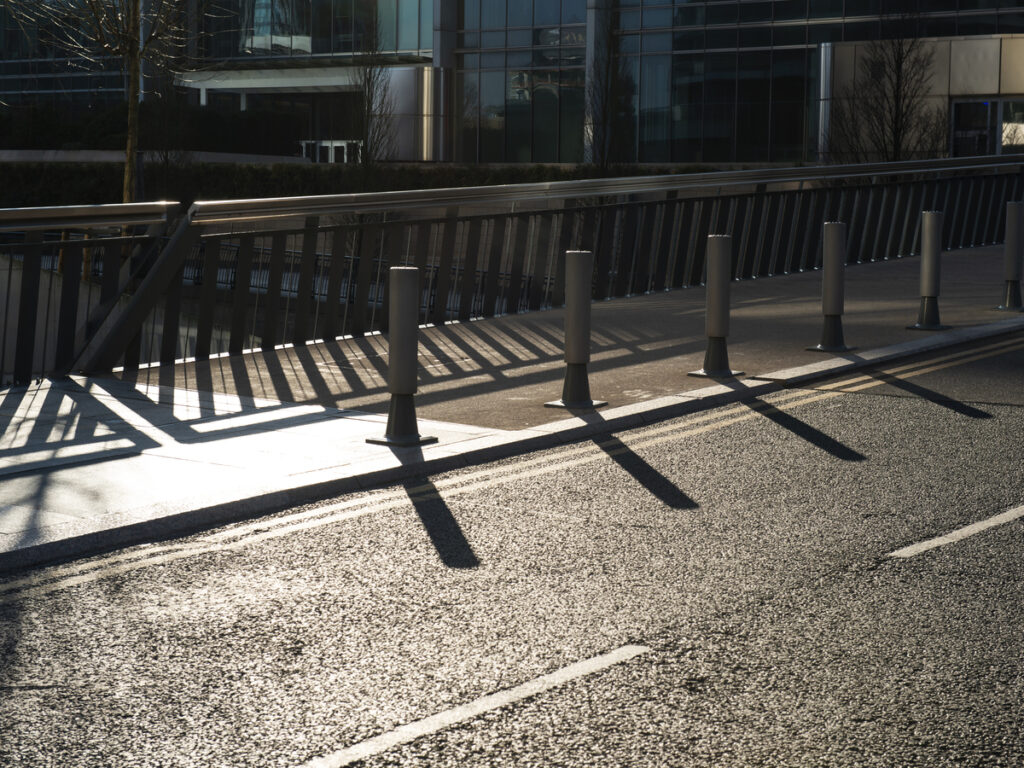
Safety bollards for sale are strong posts used to block vehicles. They also keep people and buildings safe from harm. You can find them in car parks, walkways, or near structures. The material they’re made of affects their price and use. Steel bollards are cheap, stainless steel resists rust, and iron is budget-friendly. Picking the right material makes them last longer and saves money. If you want to buy safety bollards for sale, knowing this helps you choose wisely.
At OPTRAFFIC, we offer a wide selection of safety bollards for sale in various materials and styles to suit different applications and budgets. Whether you need durable steel bollards for high-traffic zones or corrosion-resistant steel for coastal areas, OPTRAFFIC provides reliable solutions designed for long-term performance and protection.
Key Takeaways
- Pick steel bollards for cheaper projects. They are tough, low-cost, and great for busy places.
- Choose stainless steel bollards for wet or seaside areas. They don’t rust and stay shiny with little care.
- Use iron bollards for decoration. They are cheap but need regular care to stop rust.
- Look at long-term costs when picking bollards. Strong materials like stainless steel save repair money later.
- Think about the location and use. Some materials work better in certain places for safety and lasting use.
What Are Safety Bollards and Their Purpose?
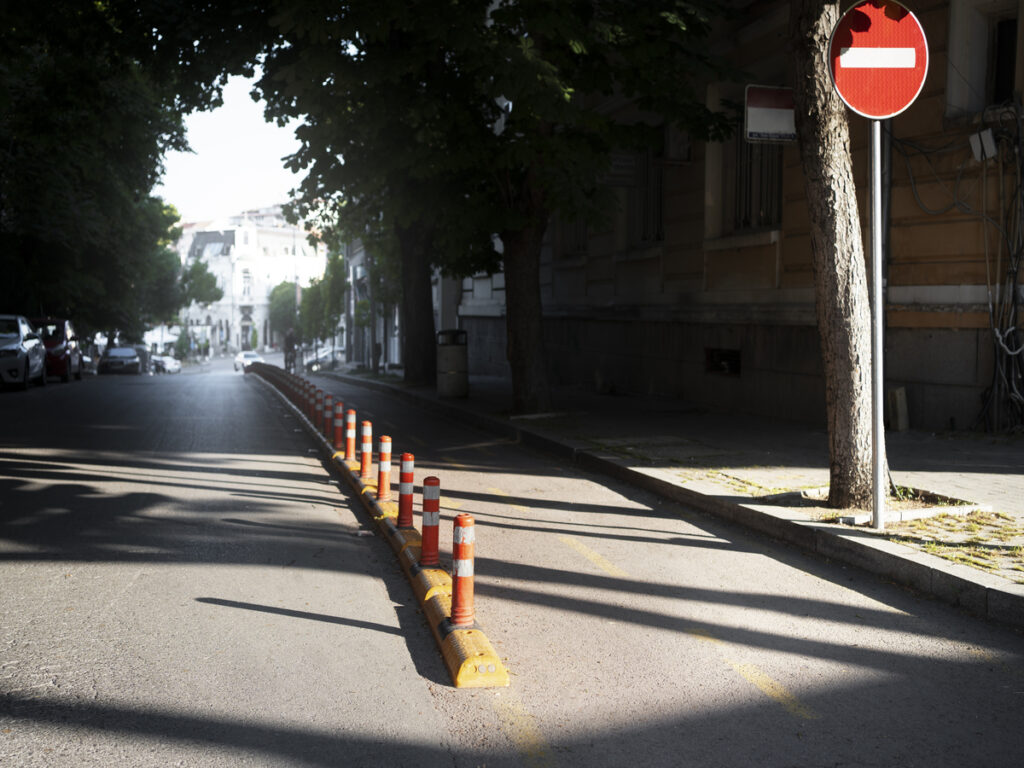
Definition of Safety Bollards
Safety bollards are strong posts that keep people and places safe. They stop vehicles from entering areas they shouldn’t, like car parks or walkways. You’ll see them where safety is important, such as near buildings or busy streets. Bollards block cars and help prevent accidents. Their designs change based on how they’re used, but all aim to improve safety and usefulness in public or private spaces.
Common Applications of Bollards
Bollards are used in many places for different reasons. In cities, they guide people and protect paths from cars. In factories, tough bollards protect machines from crashes. Decorative bollards make public areas look nicer and match building designs. Some bollards can be moved for events, while others stay fixed for long-term safety.
Here’s a table showing bollard uses and design ideas:
| Purpose/Design Consideration | Description |
|---|---|
| Aesthetics | Bollards make places look better and match old buildings. |
| Cost-effectiveness | Removable bollards are cheaper to adjust; fixed ones cost more. |
| Safety and Security | Bollards stop cars and improve safety by being placed smartly. |
| Sustainability | They help with eco-friendly designs and show where intruders might go. |
Importance of Material Selection
The material of traffic bollards affects how well they work and last. Steel bollards are very strong and good for heavy-duty jobs. Stainless steel bollards don’t rust, so they look nice even in bad weather. Iron bollards are cheaper and work well in areas with less impact.
Materials also react differently to weather. Some stay flexible in extreme heat or cold, keeping people safe. Flexible bollards bend when hit and return to shape, avoiding damage. Picking the right material helps bollards do their job, whether protecting people, cars, or buildings.
Cost Comparison of Steel, Stainless Steel, and Iron Bollards
Initial Material Costs
The price of bollards depends on the material used. Steel bollards are the cheapest and good for big projects. They are strong and easy to find. Stainless steel bollards cost more but resist rust and look shiny. Iron bollards, especially cast iron, are in the middle price range. They are affordable but not as tough as steel or stainless steel.
Here’s a simple cost comparison:
| Material Type | Cost Range (Per Unit) | Key Features |
|---|---|---|
| Steel | Low | Cheap, strong, flexible |
| Stainless Steel | High | Rust-proof, shiny finish |
| Iron | Medium | Affordable, decent strength |
Manufacturing and Fabrication Costs
Making bollards also changes their total price. Steel bollards are easy to make, keeping costs low. Stainless steel bollards need special care to stay shiny and rust-free, which costs more. Iron bollards, like cast iron, use moulds that are cheap for simple designs but cost more for fancy ones.
Fabrication costs depend on design and quantity. For example:
- Steel: Simple to shape and weld, saving money.
- Stainless Steel: Needs careful polishing, taking more time and money.
- Iron: Moulding is cheap for basic designs but pricey for detailed ones.
Maintenance and Lifecycle Costs
How long traffic bollards last and their upkeep affect their total cost. Stainless steel bollards don’t rust and need little cleaning, just soap and water. Steel bollards are strong but may need coatings to stop rust, especially near the sea. Iron bollards wear out faster and need more repairs or replacements.
Durable bollards save money over time. Here’s why:
- Stainless steel bollards resist rust, cutting repair costs.
- Steel bollards are tough but need care to avoid rust.
- Iron bollards are cheap but wear out quicker, costing more later.
Strong bollards last longer, reducing replacement costs. Materials like stainless steel and cast iron handle impacts and bad weather well, making them great for long-term use.
Performance Factors That Affect Cost
Strength and How Long They Last
When picking bollards, strength matters for their total cost. Materials like steel and stainless steel are very strong. They work well in places where impacts happen often. Steel bollards are tough and can handle heavy loads easily. Stainless steel bollards are strong too but also resist damage from weather.
Newer materials like polyurethane are also very durable. These bollards can handle hot or cold weather without breaking. They also don’t fade in sunlight. Tests like ASTM F2656 check if bollards can handle fast crashes. ASTM F3016 tests how they hold up in slower crashes. These tests make sure bollards are safe in different situations.
Rust Resistance
Rust resistance affects how much bollards cost to maintain. Stainless steel bollards don’t rust, even in wet or salty areas. This makes them great for places near the sea or with lots of rain. Steel bollards are strong but need coatings to stop rust, especially in humid places.
Iron bollards are cheaper at first but rust more easily. To make them last longer, they need regular care like repainting. Using rust-resistant materials can save money on repairs and keep bollards looking good for years.
Weather Effects and Looks Over Time
The place where road bollards are used changes how they perform. In cities, bollards face pollution and heavy use. Stainless steel bollards stay shiny with little cleaning. Steel bollards work well too but may need some touch-ups.
In coastal or factory areas, salt, chemicals, and moisture can cause damage faster. Polyurethane bollards resist sunlight and bad weather, making them last longer. How road bollards look is also important in public spaces. Stainless steel bollards have a polished look that improves the area. Steel and iron bollards can be designed to match specific styles.
Here’s a quick comparison of key performance points:
| Metric | What It Means |
|---|---|
| Easy to Install | Simple installation saves time and labour costs. |
| Material Strength | Strong materials last longer and need fewer replacements. |
| Maintenance Needs | Less maintenance means lower costs over time. |
| Cost Over Time | Total cost, including buying, upkeep, and replacing the bollards. |
By knowing these points, you can choose bollards that are strong, look good, and save money in the long run.
Suitability of Materials for Different Applications
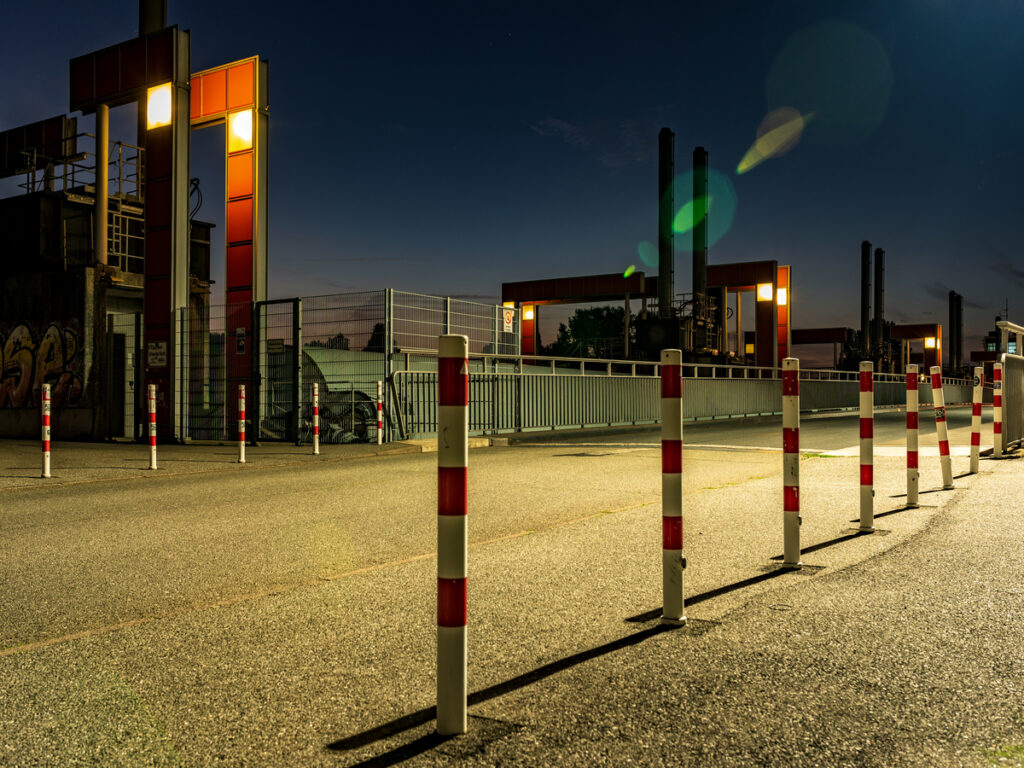
Steel Bollards: Strong and Affordable
Steel bollards are tough and don’t cost much. They work well in places with lots of cars or where crashes might happen. You’ll see steel bollards in cities, offices, or government areas where strength matters.
They can be coated to stop rust and handle bad weather. This makes them good for outdoor use, even in damp places. Steel bollards are also cheap, so they’re great for big projects.
Tip: Steel bollards are a smart choice for city and business areas.
Stainless Steel Bollards: Rust-Free and Stylish
Stainless steel bollards look nice and don’t rust. They’re perfect for places near the sea or where it’s humid. Use them in parks, plazas, or near modern buildings where looks are important.
Their shiny surface makes areas look better. They don’t need much cleaning to stay shiny. While they cost more at first, they last long and need little care, saving money later.
Note: Pick stainless steel bollards if you want style and durability.
Iron Bollards: Cheap but Needs Care
Iron bollards are affordable and can be made into fancy shapes. They’re good for old-style or decorative areas.
But iron rusts more than steel or stainless steel. You’ll need to repaint or coat them often to make them last longer. They don’t hold up well in bad weather but are fine for places with less wear and tear.
Tip: Use iron bollards where cost matters and the weather isn’t harsh.
Here’s a table comparing bollard materials:
| Material | Benefits | Best Places to Use | Cost Details |
|---|---|---|---|
| Steel | Strong, cheap, can resist rust | Cities, offices, government buildings | Low cost, very durable |
| Stainless Steel | Rust-proof, shiny look | Coastal areas, parks, modern buildings | Costs more, needs little upkeep |
| Iron | Decorative, budget-friendly | Old-style or decorative spaces | Cheap, needs regular care |
Knowing the pros and cons of each material helps you choose wisely.
Key Things to Think About When Picking Safety Bollards
Balancing Cost and How Well They Work
When picking safety bollards for sale, think about cost and how well they work. Strong materials like steel or concrete last long and are tough. They might cost more at first but need fewer repairs later. This saves money over time.
Bollards placed in the right spots can stop accidents. They keep people and buildings safe from cars, lowering costs for damages. For example, a strong steel bollard can stop a car from hitting a shop.
Here’s a table showing how performance links to cost:
| Factor | What It Means |
|---|---|
| Durability | Strong materials like steel last long and need fewer repairs. |
| Reduced Liability | Good placement stops accidents, saving money on damages or injuries. |
By thinking about these points, you can pick bollards that are safe and save money.
Long-Term Care and Costs
Looking after safety bollards affects how much they cost overall. Stainless steel bollards are easy to care for. Cleaning them keeps them shiny and rust-free. Steel bollards are strong but might need coatings to stop rust, especially near the sea.
Iron bollards are cheap at first but need repainting often to stop rust. Over time, this makes them cost more. Plastic or composite bollards need less care but aren’t as strong as metal ones.
Here’s a table comparing care needs for different materials:
| Material Type | Good Points | Bad Points |
|---|---|---|
| Concrete | Strong, handles bad weather, good for busy areas. | Heavy and not eco-friendly. |
| Steel and Aluminium | Tough, handles impacts, can be recycled. | Uses a lot of energy to make, adds to pollution. |
| Plastic and Composite | Uses recycled stuff, helps reduce waste. | Not as strong, might need replacing more often. |
Picking a material that’s easy to care for can save time and money later.
Environment and Where They’re Used
Where bollards are used changes what material is best. Near the sea, stainless steel bollards don’t rust from salt or water. In cities, steel bollards are strong and handle crashes well.
For decoration, iron bollards can have fancy designs but don’t do well in bad weather. Eco-friendly options like recycled materials are good for green projects.
Tests on steel bollards show they protect well. They can stop cars weighing 1500 kg going 32 km/h. This makes them great for busy or high-security places.
By thinking about the environment and how bollards will be used, you can pick ones that work well and last long.
Picking the right traffic safety bollards depends on what you need most. Steel bollards are strong and cheap, great for busy places. Stainless steel bollards don’t rust and stay shiny, good for coastal or fancy areas. Iron bollards cost less but need more care to last.
Think about long-term costs to get the best value. Strong materials like stainless steel need less fixing, saving money later. For big projects, steel bollards are affordable and work well. Look at your needs and location to choose bollards that are safe and last a long time.
To make the best decision for your project, check out the blog How to Choose the Best Traffic Bollard Material for Your Project. It provides valuable insights into selecting the right bollard material based on factors like durability, cost, and environmental considerations.
FAQ
What are concrete bollards, and where are they used?
Concrete bollards are strong posts made from concrete. They protect busy areas like car parks, walkways, and factories. These bollards are perfect for places needing strength and durability.
How do safety bollards for sale differ in material options?
Safety bollards are made from steel, stainless steel, or concrete. Each type has its own benefits. Steel is strong, stainless steel doesn’t rust, and concrete lasts well outdoors.
Are concrete bollards cost-effective in the long run?
Yes, concrete bollards save money over time. They need little care and handle bad weather well. Their toughness lowers future costs, making them a smart choice.
Can concrete bollards enhance safety in public spaces?
Concrete bollards improve safety by stopping cars and protecting people. Their strong build keeps areas like parks, plazas, and malls safe. They are great for public spaces.
How do I choose the right bollards for my needs?
Think about where and why you need bollards. Concrete is best for outdoor use. Stainless steel looks nice for stylish areas. Check costs and upkeep to decide wisely.

